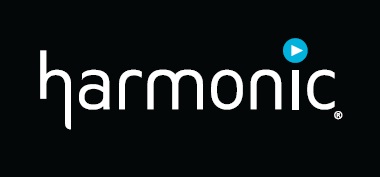Harmonic Touts First 'True' CCAP Headend Solution

Harmonic claims it has engineered first “true” Converged Cable Access Platform (CCAP) solution -- complying with the essential elements of the CableLabs spec for a high-density, integrated headend device -- although the vendor acknowledged it won’t have all the features of a full CCAP platform from the get-go.
The vendor plans to demonstrate the product, dubbed the NSG Pro, at SCTE’s Cable-Tec Expo next week in Orlando, Fla.
The NSG Pro is a nine-rack-unit device that will support more than 10,000 universal edge QAMs when fully populated. “This platform will have the capacity to last operators for the next 10 years,” said Gil Katz, vice president of Harmonic’s Cable Edge and Access Solutions group.
CableLabs' CCAP (pronounced "see cap") integrates the functions of broadcast and narrowcast QAMs and DOCSIS 3.0 interfaces to gain operational efficiencies. The spec, announced in June 2011, synthesizes previous headend-consolidation projects that were under way at Comcast and Time Warner Cable.
According to Katz, Harmonic analyzed the CableLabs CCAP specification and identified out what the company felt were the most critical features. Those include: full universal edge QAM, integrated cable modem termination system (CMTS), a minimum of 64 narrowcast QAMs per port, QAM replication across multiple ports, and carrier-class functionality with power redundancy on a per port.
CCAP includes nearly 1,000 features, and “we designed the platform to comply with all those parameters,” Katz said.
However, the NSG Pro will not provide integrated CMTS functionality in the initial release. The first version of the product will include downstream DOCSIS line cards, while upstream line cards will be available in a future release.
The smarter way to stay on top of the multichannel video marketplace. Sign up below.
“We are not going to have everything from Day One. But those features will be available when customers need them,” Katz said.
Harmonic doesn’t have an official date for when the NSG Pro will have integrated CMTS features. “The argument is… it will take another year or two [before MSOs] require the upstream capacity” as outlined in the full CCAP specification, Katz said.
With the NSG Pro, Harmonic is now positioned to enter the CMTS market. The company is developing the DOCSIS technology itself, and has been hiring engineers with DOCSIS expertise and experience developing CMTS, according to Katz. In July, San Jose, Calif.-based Harmonic appointed Nimrod Ben-Natan, who previously ran Harmonic's product marketing, solutions and strategy group, to head up the newly formed Edge and Access business unit as senior vice president and general manager.
This May, Casa Systems claimed it would be the first vendor to deliver “full” CCAP functionality, with a module for its C10G CMTS that delivers 96 channels per port including 32 channels of narrowcast and 64 channels of broadcast. But CCAP requires at least 64 narrowcast QAMs per port, of which 48 must support full DOCSIS, Katz pointed out.
The NSG Pro is already in one Harmonic customer’s labs, according to Katz. The company will “be able to start taking orders right after” Cable-Tec Expo, he said, although he added, “Practically speaking it takes time before you really ship for deployment.”
In developing the CCAP platform, Harmonic “put a ton of emphasis on the cost of the bill of materials for the end-to-end solution,” Katz said. As a result, the NSG Pro can be price-competitive with any edge QAM platform, he said, declining to discuss pricing details.
With the ability to support any service on any port at the scale defined by CCAP, the NSG Pro provides a future-proof road map for MSOs, Katz said. For example, “our customers don’t know how many linear versus time-shifted QAMs they will need,” he said. “The beauty of our solution is, they don’t have to know.”
